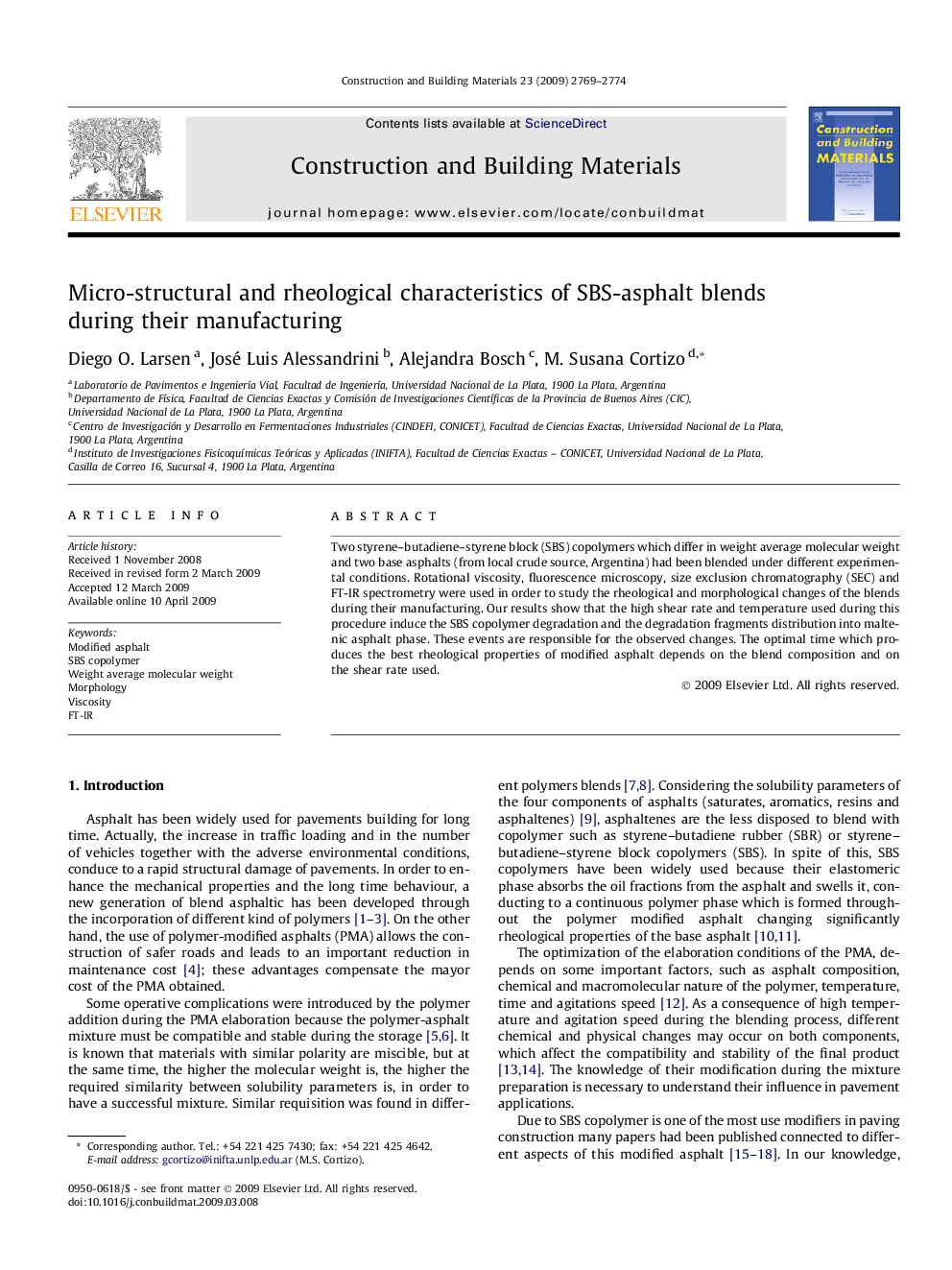| Article ID | Journal | Published Year | Pages | File Type |
|---|---|---|---|---|
| 260169 | Construction and Building Materials | 2009 | 6 Pages |
Two styrene–butadiene–styrene block (SBS) copolymers which differ in weight average molecular weight and two base asphalts (from local crude source, Argentina) had been blended under different experimental conditions. Rotational viscosity, fluorescence microscopy, size exclusion chromatography (SEC) and FT-IR spectrometry were used in order to study the rheological and morphological changes of the blends during their manufacturing. Our results show that the high shear rate and temperature used during this procedure induce the SBS copolymer degradation and the degradation fragments distribution into maltenic asphalt phase. These events are responsible for the observed changes. The optimal time which produces the best rheological properties of modified asphalt depends on the blend composition and on the shear rate used.
